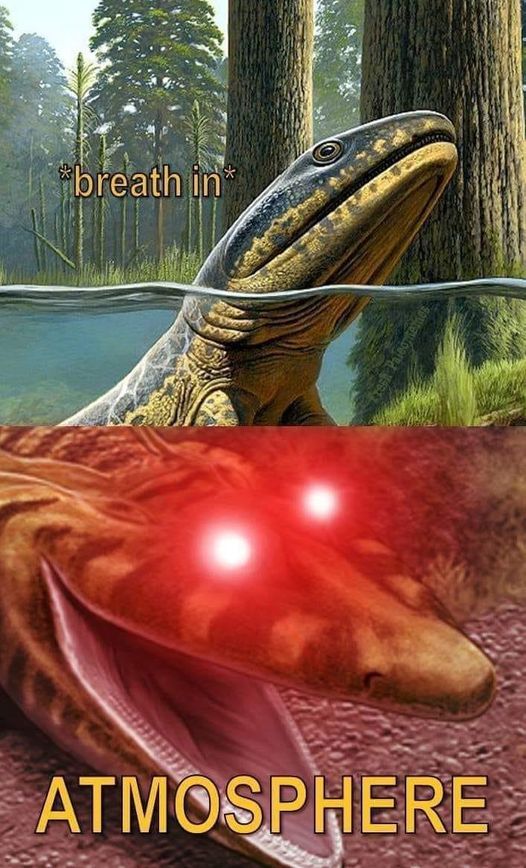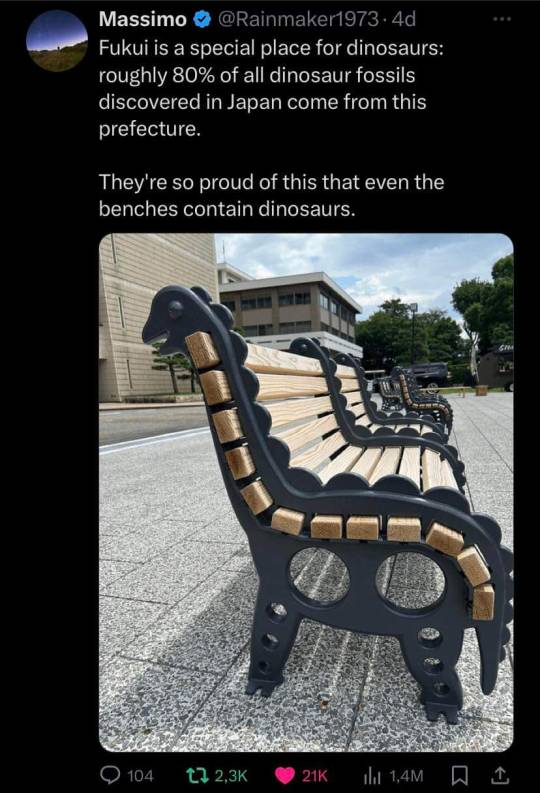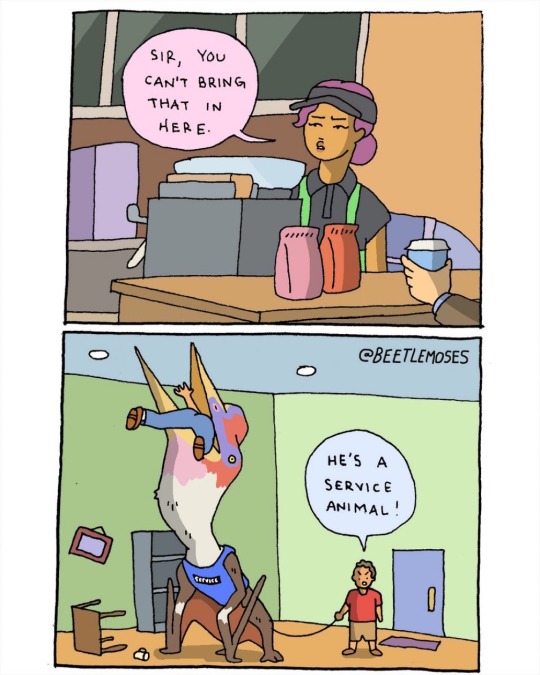Text
I’m so emotional about dinosaur stuffed animals,,, there are these creatures, extinct long before any of us were alive, but we found their bones and their eggs and their footprints. And we made drawings and models of what they could’ve looked like. And we made them into stuffed animals so we could hold them. We made them soft so we could love them. I’m sobbing
103K notes
·
View notes
Text
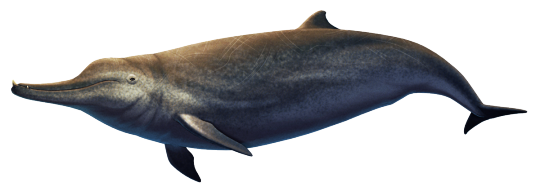
Ninoziphius platyrostris was an early beaked whale that lived during the late Miocene (~6 million years ago) in warm coastal waters covering what is now southwestern Peru. Its ancestors appear to have branched off from all other beaked whales very early in the group's history, indicating a "ghost lineage" going back to at least 17 million years ago.
About 4.4m long (~14'5"), it was less specialized for suction feeding and deep diving than modern beaked whales. Also unlike most modern species its jaws were lined with numerous interlocking teeth, with heavy wear suggesting it may have hunted close to the seafloor, where disturbed sand and grit would have regularly ended up in its mouth along with its prey and steadily ground down its teeth during its lifetime.
Males had a pair of stout tusks at the tip of their upward-curving lower jaw, with possibly a second smaller set of tusks behind them, which were probably used for fighting each other like in modern beaked whales.
Its shallow water habitat and more abrasive diet suggest Ninoziphius' lifestyle was much more like modern dolphins than modern beaked whales, and other early beaked whales like Messapicetus similarly seem to have occupied dolphin-like ecological niches.
These dolphin-like forms disappeared around the same time that true dolphins began to diversify, possibly struggling to compete for the same food sources, while other beaked whales that had begun to specialize for deep sea diving survived and thrived. Interestingly this ecological shift seems to have happened twice, in two separate beaked whale lineages – although only one of them still survives today – with bizarre bony "internal antlers" even independently evolving in both groups.
———
NixIllustration.com | Tumblr | Patreon
References:
Bianucci, Giovanni, et al. "New beaked whales from the late Miocene of Peru and evidence for convergent evolution in stem and crown Ziphiidae (Cetacea, Odontoceti)." PeerJ 4 (2016): e2479. https://doi.org/10.7717/peerj.2479
Bianucci, Giovanni, et al. A new Late Miocene beaked whale (Cetacea, Odontoceti) from the Pisco Formation, and a revised age for the fossil Ziphiidae of Peru. Bollettino della Societa Paleontologica Italiana 63.1 (2024): 21-43. https://www.researchgate.net/publication/380459192_A_new_Late_Miocene_beaked_whale_Cetacea_Odontoceti_from_the_Pisco_Formation_and_a_revised_age_for_the_fossil_Ziphiidae_of_Peru
Gol'din, Pavel. "‘Antlers inside’: are the skull structures of beaked whales (Cetacea: Ziphiidae) used for echoic imaging and visual display?." Biological Journal of the Linnean Society 113.2 (2014): 510-515. https://doi.org/10.1111/bij.12337
Lambert, Olivier, Christian De Muizon, and Giovanni Bianucci. "The most basal beaked whale Ninoziphius platyrostris Muizon, 1983: clues on the evolutionary history of the family Ziphiidae (Cetacea: Odontoceti)." Zoological Journal of the Linnean Society 167.4 (2013): 569-598. https://doi.org/10.1111/zoj.12018
Lambert, Olivier, et al. "No deep diving: evidence of predation on epipelagic fish for a stem beaked whale from the Late Miocene of Peru." Proceedings of the Royal Society B: Biological Sciences 282.1815 (2015): 20151530. https://doi.org/10.1098/rspb.2015.1530
141 notes
·
View notes
Text
Dang it.
It has been zero days since I forgot allosexuals existed.
524 notes
·
View notes
Text
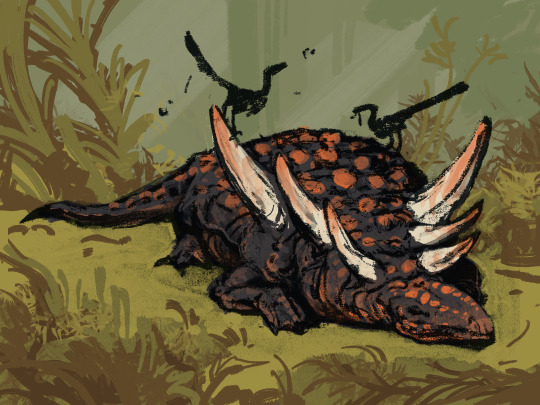
another flat fuck with tiny theropods for maysozoic: Sauropelta
2K notes
·
View notes
Text
Brachytrachelopan
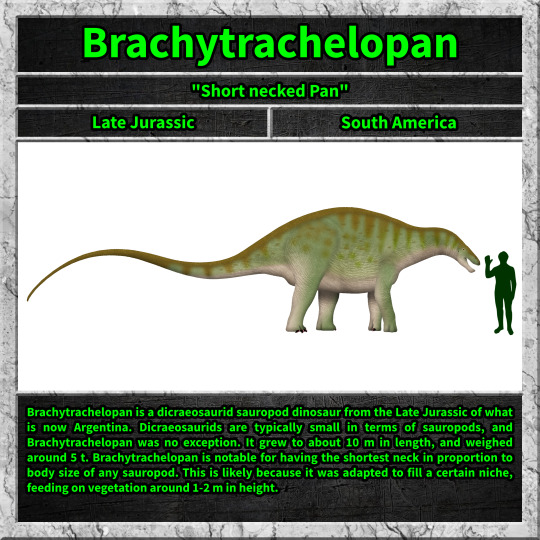
Brachytrachelopan is a dicraeosaurid sauropod dinosaur from the Late Jurassic of what is now Argentina. Dicraeosaurids are typically small in terms of sauropods, and Brachytrachelopan was no exception. It grew to about 10 m in length, and weighed around 5 t. Brachytrachelopan is notable for having the shortest neck in proportion to body size of any sauropod. This is likely because it was adapted to fill a certain niche, feeding on vegetation around 1-2 m in height.
82 notes
·
View notes
Text


Reblog to give Izutsumi one Catisfactions salmon-flavoured treat
Edit: I noticed some transphobes reblogging this post, so I blocked them. If you're a transphobe and reading this: Fuck off, and have a bad day.
8K notes
·
View notes
Text
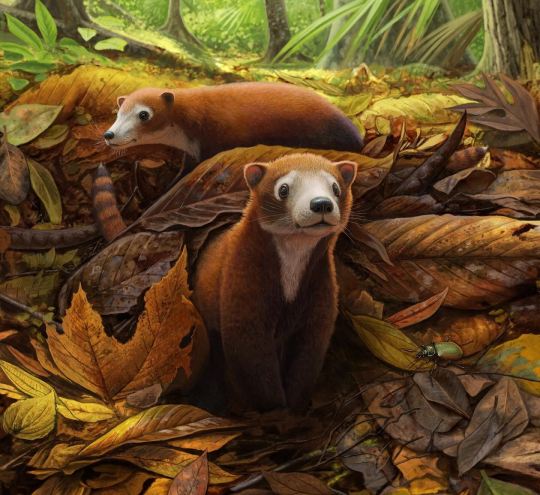
Skull of a new periptychid mammal from the lower Paleocene Denver Formation of Colorado (Corral Bluffs, El Paso County)
Lucas N. Weaver, Jordan W. Crowell, Stephen G. B. Chester & Tyler R. Lyson
Abstract
The Periptychidae, an extinct group of archaic ungulates (‘condylarths’), were the most speciose eutherian mammals in the earliest Paleocene of North America, epitomizing mammalian ascendency after the Cretaceous–Paleogene (K–Pg) mass extinction.
Although periptychids are mostly known from fragmentary gnathic remains, the Corral Bluffs area within the Denver Basin, Colorado, has yielded numerous exceptionally well-preserved mammalian fossils, including periptychids, from the earliest Paleocene.
Here we describe a partial cranium and articulated dentaries plus an additional unassociated dentary fragment of a small-bodied (~273–455 g) periptychid from ca. 610 thousand years after the K–Pg mass extinction (Puercan 2 North American Land Mammal ‘age’) at Corral Bluffs.
Based on these new fossils we erect Militocodon lydae gen. et sp. nov. The dentition of M. lydae exhibits synapomorphies that diagnose the Conacodontinae, but it is plesiomorphic relative to Oxyacodon, resembling putatively basal periptychids like Mimatuta and Maiorana in several dental traits. As such, we interpret M. lydae as a basal conacodontine. Its skull anatomy does not reveal clear periptychid synapomorphies and instead resembles that of arctocyonids and other primitive eutherians. M. lydae falls along a dental morphocline from basal periptychids to derived conacodontines, which we hypothesize reflects a progressive, novel modification of the hypocone to enhance orthal shearing and crushing rather than grinding mastication.
The discovery and thorough descriptions and comparisons of the partial M. lydae skull represent an important step toward unraveling the complex evolutionary history of periptychid mammals.
Read the paper here:
Skull of a new periptychid mammal from the lower Paleocene Denver Formation of Colorado (Corral Bluffs, El Paso County) | Journal of Mammalian Evolution (springer.com)
106 notes
·
View notes
Text

me when I see shipping content implied to be romantic but the aroace gremlin inside me ruins the mood by headcanoning it queerplatonic or platonic 💔💔💔
5K notes
·
View notes
Text

Heads up… it's Fossil Friday! In this archival image, Museum preparators work on a trio of Tyrannosaur skulls. With 4-ft- (1.2-m-) long jaws and powerful bone-crushing teeth, T. rex was one of the largest and most fearsome carnivores of all time. In fact, this dinosaur could bite with about 7,800 pounds of force (34,500 N)—the equivalent to the weight of three cars! No living animal, and few extinct ones, could rival its bite.
Although Tyrannosaurus rex is one of the most renowned dinosaurs, few of the fossil specimens recovered by paleontologists are complete. The first partial T. rex skeleton was discovered by a curator from the Museum—the legendary Barnum Brown—and we have one of the few specimens of T. rex on public display! Fun fact: The Museum’s T. rex specimen, AMNH 5027, inspired the cover of Michael Crichton’s Jurassic Park.
Photo: Image no. 129039 © AMNH Library
382 notes
·
View notes
Text

New artwork, inspired by the Carnotaur from Prehistoric Planet <3
287 notes
·
View notes
Text
Tiamat valdecii Pereira et al., 2024 (new genus and species)
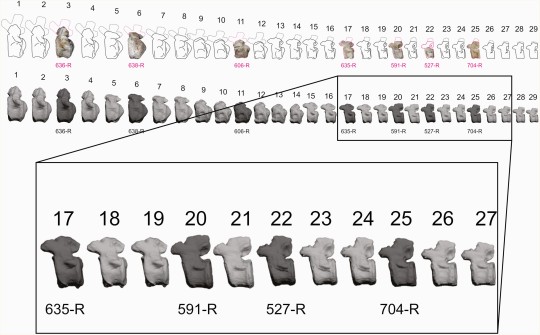
(Tail vertebrae [top] and digital reconstruction of more complete tail skeleton [bottom] of Tiamat valdecii, from Pereira et al., 2024)
Meaning of name: Tiamat = mother of dragons and gods in ancient Mesopotamian mythology; valdecii = for Valdeci dos Santos Júnior [Brazilian archaeologist who discovered the site where the original fossil was found]
Age: Early–Late Cretaceous (Albian–Cenomanian)
Where found: Açu Formation, Ceará, Brazil
How much is known: Several tail vertebrae.
Notes: Tiamat was a titanosaurian sauropod. Titanosaur fossils are primarily known from the Late Cretaceous, so Tiamat may help shed light on the early evolution and diversity of this major sauropod group. The vertebrae in the middle of its tail exhibit complex joint surfaces, which may have been adaptations for increasing the mobility of the tail without increasing the risk of dislocation.
Reference: Pereira, P.V.L.G.C., K.L.N. Bandeira, L.S. Vidal, T.B. Ribeiro, C.R.A. Candeiro, and L.P. Bergqvist. 2024. A new sauropod species from north-western Brazil: biomechanics and the radiation of Titanosauria (Sauropoda: Somphospondyli). Zoological Journal of the Linnean Society advance online publication. doi: 10.1093/zoolinnean/zlae054
46 notes
·
View notes
Note
Cat, what do you suggest for someone who had a really bad day?
worry not for im know somebeody whom is expert in vanquishinge bad days
96K notes
·
View notes

